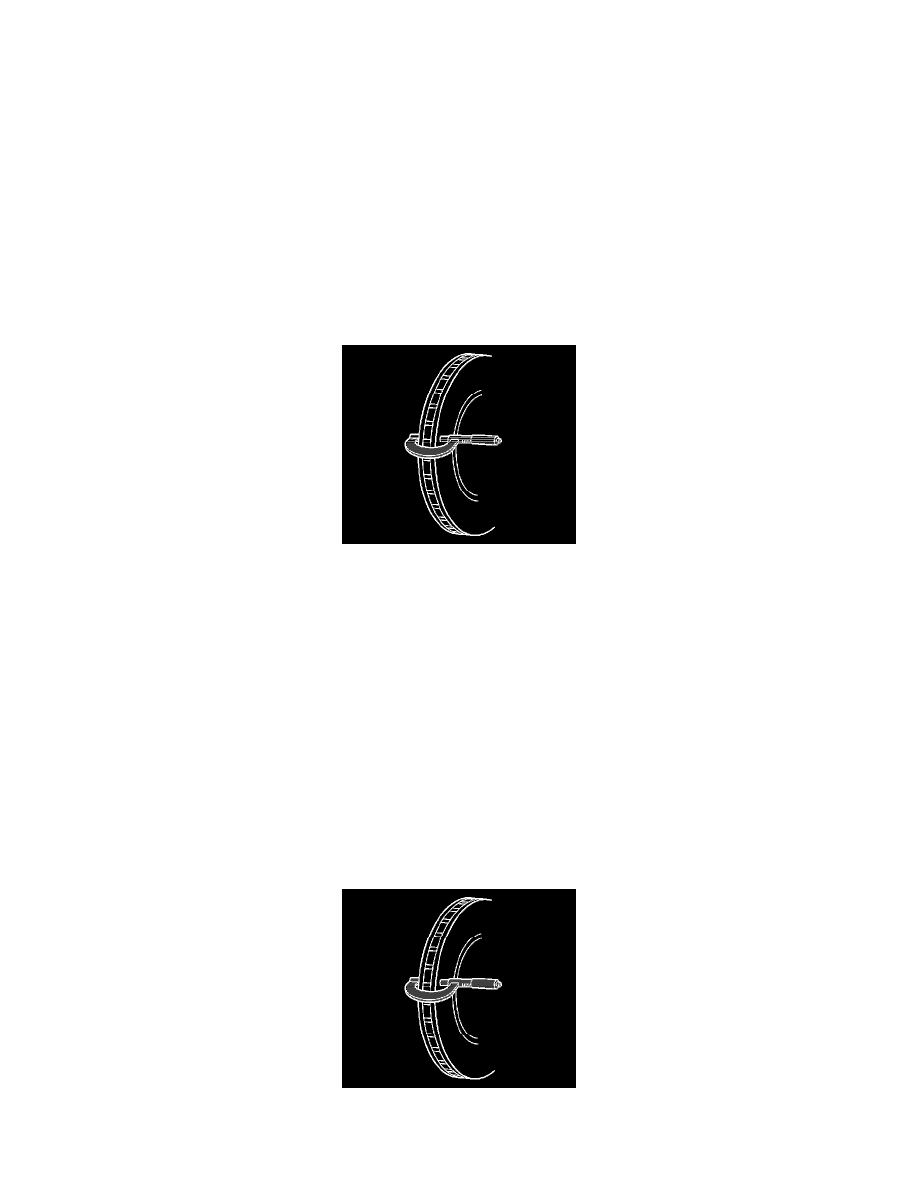ION L4-2.0L SC (2007)

the rotor in place before removing the J45101-100 and the lug nuts.
Brake Rotor Surface and Wear Inspection
Brake Rotor Surface and Wear Inspection
Caution: Refer to Brake Dust Caution.
1. If the inboard friction surface of the brake rotor is not accessible, reposition and support the caliper with the brake pads. Refer to Front Disc Brake
Pads Replacement and/or Rear Disc Brake Pads Replacement, if equipped.
2. Clean the friction surfaces of the brake rotor with denatured alcohol, or an equivalent approved brake cleaner.
3. Inspect the friction surfaces of the brake rotor for the following braking surface conditions:
^
Heavy rust and/or pitting
Light surface rust can be removed with an abrasive disc. Heavy surface rust and/or pitting must be removed by refinishing the rotor.
^
Cracks and/or heat spots
^
Excessive blueing discoloration
4. If the friction surfaces of the brake rotor exhibit one or more of the braking surface conditions listed, the rotor requires refinishing or replacement.
5. Using a micrometer calibrated in thousandths-of-a-millimeter, or ten-thousandths-of-an-inch, measure and record the scoring depth of any grooves
present on the rotor friction surfaces.
6. Compare the groove scoring depth recorded to the following specification:
Brake rotor maximum allowable scoring: 1.50 mm (0.059 in)
7. If the brake rotor scoring depth exceeds the specification, or if an excessive amount of scoring is present, the rotor requires refinishing or
replacement.
Brake Rotor Thickness Measurement
Brake Rotor Thickness Measurement
Caution: Refer to Brake Dust Caution.
1. If the inboard friction surface of the brake rotor is not accessible, reposition and support the caliper with the brake pads. Refer to Front Disc Brake
Pads Replacement and/or Rear Disc Brake Pads Replacement, if equipped.
2. Clean the friction surfaces of the brake rotor with denatured alcohol, or an equivalent approved brake cleaner.
3. Using a micrometer calibrated in thousandths-of-a-millimeter, or ten-thousandths-of-an-inch, measure and record the thickness of the brake rotor at
4 or more points, evenly spaced around the rotor.
